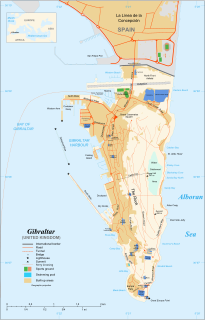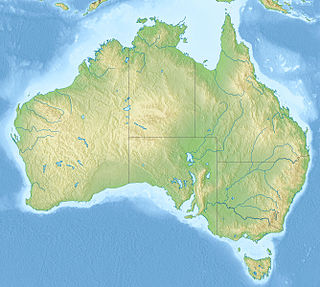 W
WThe Adrar is a highland natural and historical region of the Sahara Desert in northern Mauritania. The Adrar Region, an administrative division of Mauritania, is named after the traditional region. It is sometimes called Adrar Tamar to distinguish it from other areas called Adrar in the Sahara.
 W
WOne of the classic locations for the study of Triassic sandstones in the UK is at Alderley Edge in Cheshire. Numerous scientists from the early 19th century up to the present day have studied the area and it is a popular field site for universities around the UK.
 W
WThe Aztec Sandstone is an Early Jurassic geological formation of primarily eolian sand from which fossil pterosaur tracks have been recovered. The formation is exposed in the Mojave Desert of Arizona, California and Nevada.
 W
WThe Barun Goyot Formation is a geological formation dating to the Late Cretaceous Period. It is located within and is widely represented in the Gobi Desert Basin, in the Ömnögovi Province of Mongolia.
 W
WBlue Diamond Hill is a 4,931-foot (1,503 m) peak that borders Red Rock Canyon in Nevada, west of Las Vegas. The Blue Diamond Mine is located on the hill, and the small community of Blue Diamond, Nevada is located nearby. Several housing projects have been proposed for the hill since 2002.
 W
WCanyonlands National Park is an American national park located in southeastern Utah near the town of Moab. The park preserves a colorful landscape eroded into numerous canyons, mesas, and buttes by the Colorado River, the Green River, and their respective tributaries. Legislation creating the park was signed into law by President Lyndon Johnson on September 12, 1964.
 W
WThe Cape Flats is an expansive, low-lying, flat area situated to the southeast of the central business district of Cape Town.
 W
WColorado National Monument is a National Park Service unit near the city of Grand Junction, Colorado. Sheer-walled canyons cut deep into sandstone and granite–gneiss–schist rock formations. This is an area of desert land high on the Colorado Plateau, with pinyon and juniper forests on the plateau. The park hosts a wide range of wildlife, including red-tailed hawks, golden eagles, ravens, jays, desert bighorn sheep, and coyotes. Activities include hiking, horseback riding, road bicycling, and scenic drives; a visitor center on the west side contains a natural history museum and gift shop. There are scenic views from trails, Rim Rock Drive, which winds along the plateau, and the campground. Nearby are the Book Cliffs and the largest flat-topped mountain in the world, the Grand Mesa.
 W
WCoyote Gulch is a tributary of the Escalante River, located in Garfield and Kane Counties in southern Utah, in the western United States. Over 25 mi (40 km) long, Coyote Gulch exhibits many of the geologic features found in the Canyons of the Escalante, including high vertical canyon walls, narrow slot canyons, domes, arches, and natural bridges. The upper sections of Coyote Gulch are located within the Grand Staircase-Escalante National Monument while its lower sections are located in the Glen Canyon National Recreation Area.
 W
WThe Djadochta Formation is a geological formation situated in central Asia, dating from the Late Cretaceous Period. Laid down in the early Campanian, possibly starting in the latest Santonian, it is dated somewhat uncertainly at about 75-71 mya. The type locality are the famous "Flaming Cliffs", locally known as Bayanzag or Ulaan-Ereg.
 W
WThe Forest Sandstone is a geological formation in southern Africa, dating to roughly between 200 and 190 million years ago and covering the Hettangian to Sinemurian stages of the Jurassic Period in the Mesozoic Era. As its name suggests, it consists mainly of sandstone.
 W
WGarden of the Gods is a public park located in Colorado Springs, Colorado, United States. It was designated a National Natural Landmark in 1971.
 W
WThe Navajo Sandstone is a geological formation in the Glen Canyon Group that is spread across the U.S. states of southern Nevada, northern Arizona, northwest Colorado, and Utah as part of the Colorado Plateau province of the United States.
 W
WThe Old Red Sandstone is an assemblage of rocks in the North Atlantic region largely of Devonian age. It extends in the east across Great Britain, Ireland and Norway, and in the west along the northeastern seaboard of North America. It also extends northwards into Greenland and Svalbard. These areas were a part of the ancient continent of Euramerica/Laurussia. In Britain it is a lithostratigraphic unit to which stratigraphers accord supergroup status and which is of considerable importance to early paleontology. For convenience the short version of the term, ORS is often used in literature on the subject. The term was coined to distinguish the sequence from the younger New Red Sandstone which also occurs widely throughout Britain.
 W
WThe Red Rock Canyon National Conservation Area in Clark County, Nevada, is an area managed by the Bureau of Land Management as part of its National Landscape Conservation System, and protected as a National Conservation Area. It is about 15 miles (24 km) west of Las Vegas, and is easily seen from the Las Vegas Strip. More than three million people visit the area each year.
 W
WThe Rock of Gibraltar, also known as the Jabel-al-Tariq, is a monolithic limestone promontory located in the territory of Gibraltar, near the southwestern tip of Europe on the Iberian Peninsula. It is 426 m (1,398 ft) high. Most of the Rock's upper area is covered by a nature reserve, which is home to around 300 Barbary macaques. These macaques, as well as a labyrinthine network of tunnels, attract many tourists each year.
 W
WThe Slickrock Trail, is a popular mountain biking destination with worldwide fame that is located in Grand County, Utah, United States, a few miles northeast of the city of Moab.
 W
WThe Tumblagooda Sandstone is a geological formation deposited during the Silurian or Ordovician periods, between four and five hundred million years ago, and is now exposed on the west coast of Australia in river and coastal gorges near the tourist town of Kalbarri, Kalbarri National Park and the Murchison River gorge, straddling the boundary of the Carnarvon and Perth basins. Visible trackways are interpreted by some to be the earliest evidence of fully terrestrial animals.
 W
WValley of Fire State Park is a public recreation and nature preservation area covering nearly 46,000 acres (19,000 ha) located 16 miles (26 km) south of Overton, Nevada. The state park derives its name from red sandstone formations, the Aztec Sandstone, which formed from shifting sand dunes 150 million years ago. These features, which are the centerpiece of the park's attractions, often appear to be on fire when reflecting the sun's rays. It is Nevada's oldest state park, as commemorated with Nevada Historical Marker #150. It was designated as a National Natural Landmark in 1968.
 W
WVedauwoo is an area of rocky outcrops located in southeastern Wyoming, United States, north of Interstate 80, between Laramie and Cheyenne. Its name, according to some, is a romanized version of the Arapaho word "bito'o'wu" meaning "earth-born".
 W
WThe Wave is a sandstone rock formation located in Arizona, United States, near its northern border with Utah. The formation is situated on the slopes of the Coyote Buttes in the Paria Canyon-Vermilion Cliffs Wilderness of the Colorado Plateau. The area is administered by the Bureau of Land Management (BLM) at the Grand Staircase-Escalante National Monument visitor center in Kanab, Utah.
 W
WThe Wingate Sandstone is a geologic formation in the Glen Canyon Group of the Colorado Plateau province of the United States which crops out in northern Arizona, northwest Colorado, Nevada, and Utah.